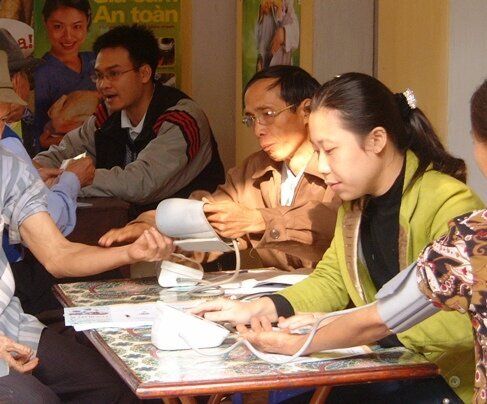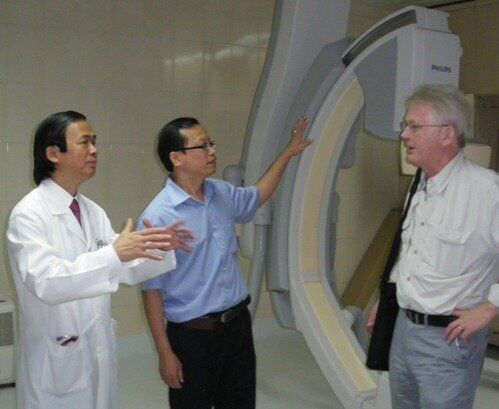|
I first visited Vietnam around 20 years ago - at a time when almost everyone travelled by bicycle, and the whole country operated in a somewhat austere style. Having been back regularly since then, I've seen the bicycles transforming into motorbikes, and more recently the motorbikes into cars. And not only transport has changed - the whole economy has boomed out of recognition, now operating within a vibrant, market-driven society. But what does that mean for the lives of Vietnamese people?

Traditional transportation in Vietnam
Last week a group of Vietnamese and Swedish public health researchers met in Hanoi to conclude a twenty-year joint programme of discovery and action in Vietnam's health sector. Our team at Umeå University has been involved over the past twenty years in a collaboration with Hanoi Medical University, the Vietnam Health Strategy and Policy Institute, the Karolinska Institute in Stockholm and the Nordic School of Public Health, to promote the development of the public health sector in Vietnam. This has been generously supported by the Swedish Development Agency, Sida. Within this collaboration, we have seen 37 Vietnamese students gaining a Master of Public Health (MPH) degree, with 22 reaching doctoral (PhD) level. This is a massive increase in capacity for the Vietnamese public health community.
The rapid developments in Vietnam over the last two decades are reflected in peoples' health. As the 13th most populous country in the world, with over 90 million people, the health needs in Vietnam are not small. In parallel with the country's development, patterns of health and disease have also changed rapidly. Gone are the days portrayed in films from the Vietnam war era of people living in jungles and being continuously ravaged by tropical diseases. Modern-day Vietnamese are most likely to encounter non-communicable diseases, not least due to an increasing proportion of the population growing older. According to the United Nations, life expectancy at birth in Vietnam now exceeds 74 years, higher than in several European countries and well above the world average.
Within our collaboration, a population field laboratory called FilaBavi, just outside Hanoi, started in 1999 and has kept detailed records on a population of more than 50,000 people in order to understand the health issues in typical Vietnamese communities. Part of the international INDEPTH Network, this has enabled us to understand in more detail just how health is changing in rural Vietnam. Many more people now experience risk factors such as high blood pressure, which means that local health services are having to change their priorities. Rural clinics in the FilaBavi area, in conjunction with the Vietnam National Heart Institute, are leading the way by offering regular hypertension clinics.

Measuring blood pressure at a rural health centre
And the need for this was all too obvious when I visited the National Heart Institute and saw the extreme pressure from people with more advanced heart disease on the limited number of available beds. The good news is that the National Heart Institute is also being renovated and upgraded, including the installation of world-class cardiac intervention equipment and technology, to meet these needs. This is another sign of Vietnam's successful development.

Director of the National Heart Insitute, Prof. Nguyen Lan Viet, and colleague Dr. Pham Thai Son explain their latest cardiac equipment to Prof. Lars Weinehall of Umeå University
(originally published as a Huff Post UK Blog 14/11/2011)
|